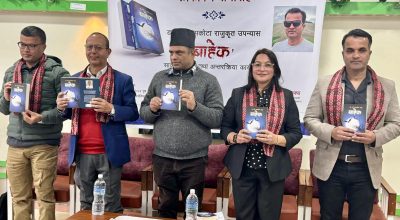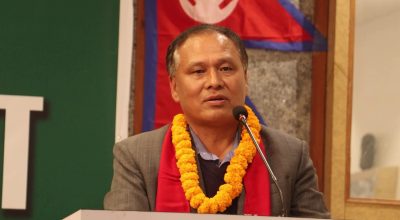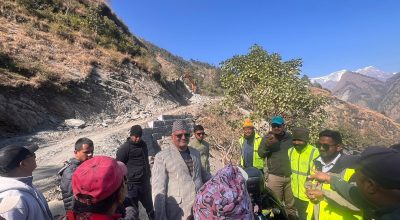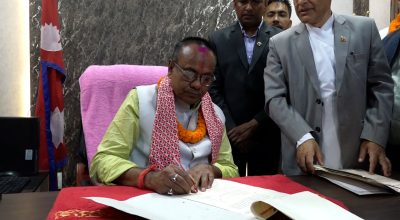
Buddhi Sharma
In recent times, there has been a noteworthy shift in the connection between China and Nepal, marked by stronger cultural, political, and economic bonds. The field of education has been one of the most important areas for collaboration. This article examines the developing collaboration in the sphere of education between China and Nepal, emphasizing significant projects, difficulties, and future prospects.
China and Nepal have a long history together that spans several centuries. However, the bilateral connections did not start to pick up steam until the 1950s. A significant turning point was the establishment of diplomatic ties in 1955, which laid the foundation for further cooperation. China has become one of Nepal’s most important development partners in the decades that have followed, giving the country significant funding and investments in a range of fields, including education.
The cooperation between China and Nepal in education has grown significantly in the last several years. Nepali students can now attend Chinese colleges to complete their higher education thanks to China’s generous scholarship program.
Scholarships from China have been generously awarded to students from Nepal. In particular, the Chinese government scholarship program has played a significant role in helping young people in Nepal pursue their academic goals. Hundreds of Nepali students have received the chance to study in prestigious Chinese universities in a variety of fields because to this initiative.
A number of Chinese and Nepali universities have collaborated on research projects, staff and student exchanges, and educational development initiatives. These partnerships have improved academic cooperation and promoted cross-cultural understanding between the two nations.
China and Nepal have acknowledged the value of linguistic competence in fostering bilateral ties. While Nepali language programs have been developed in Chinese colleges, Chinese language courses have been offered in Nepali educational institutions. China has additionally provided assistance to Nepal in advancing its field of vocational education. Chinese professionals have imparted their knowledge of vocational training, enabling Nepalese youth to acquire the skills necessary to satisfy the needs of the job market.
Even with the notable advancements in Nepal-China education cooperation, a number of obstacles still need to be addressed. The language barrier is one of the major obstacles. Even if more Nepalese students are becoming fluent in Chinese, there may still be challenges with academic and cross-cultural communication. The acknowledgment of academic degrees presents another difficulty. It is imperative to guarantee that degrees and certifications issued in Nepal be accepted by Chinese educational establishments in order to promote academic cooperation and student mobility.
These difficulties do, yet, also offer chances for continued development. Through the implementation of efficacious language training initiatives, communication and comprehension between the two nations can be improved. Similar to this, China and Nepal might expedite student exchange and collaborative research by creating explicit procedures for the validation of academic credentials.
Unbalances in the education collaboration may result from the differences in Nepal’s and China’s economic development. Even while China provides Nepali students with a wealth of scholarships and possibilities, many Nepalese families encounter financial difficulties that may restrict their ability to take advantage of these advantages. Nepal and China might look into measures to make education more affordable for Nepalese students in order to solve this gap, such as by expanding the number of financial assistance and scholarship opportunities available.
There are a number of encouraging areas for future growth in the partnership between China and Nepal in the field of education. Enhancing cooperation in research and innovation is one approach. Nepal and China can enhance knowledge and tackle urgent global issues by collaborating on research initiatives and exchanging technologies. Vocational and technical education is another area with room for expansion. Through the provision of skill-based education to Nepalese students, collaboration between China and Nepal can promote economic growth and alleviate poverty.
The prospects for Nepal-China cooperation in education are bright. There is a lot of room for more cooperation in the sector of education as the two nations’ bilateral relations continue to grow. The creation of a unified education commission might offer a forum for high-level discussion and coordination of policies. Furthermore, looking into chances for collaboration in innovation, research, and technology transfer might help both nations develop mutually.
The governments of China and Nepal should take into account the following recommendations in order to further solidify their relationship in education:
Boost language competency by encouraging Chinese language instruction in Nepali colleges and universities and by pushing Nepali students to pursue Chinese language studies overseas. In a similar vein, encourage Nepali language instruction in Chinese educational establishments.
Improve the exchange programs for academics: To promote cross-cultural understanding and knowledge exchange, broaden and enhance academic and student exchange programs.
Promote the acceptance of academic credentials: To facilitate student mobility and academic cooperation, clearly define procedures for the reciprocal recognition of academic degrees and certificates.
Encourage collaborative research and innovation: Foster the exchange of technology and knowledge by supporting collaborative research projects between Chinese and Nepali universities.
Increase collaboration in technical and vocational education: Provide courses that will give Nepali students the tools they need to succeed in the job market and advance the country’s economy.
Boost cooperation in higher learning: Encourage collaborations between Chinese and Nepali academic institutions to create shared campuses, research facilities, and programs. Boost financing for collaborative education: Assure that the cooperation is not hampered by budgetary constraints by allocating sufficient resources to support education activities. Take steps to close the digital divide: To promote online learning and cooperation, close the digital gap between China and Nepal.
Encourage cross-cultural understanding and appreciation by planning cultural events and activities.
Form a commission on joint education: Establish a high-level forum for policy coordination and discussion about cooperation in education.
In summary, there has been a notable expansion in the collaboration between China and Nepal in the field of education in recent times. Even with the obstacles still there, there are plenty of chances for additional cooperation. Nepal and China have the potential to enhance their bilateral relationship and provide a better future for their youth by strengthening their current cooperative foundation.
While Nepal-China education cooperation has made significant strides, it is essential to address the challenges that exist and explore new avenues for future development. By addressing the language barrier, ensuring the recognition of academic credentials, addressing economic disparities, and enhancing the quality and relevance of education programs, Nepal and China can build a stronger and more equitable partnership in the realm of education.
Even if the collaboration between China and Nepal in the field of education has advanced significantly, there are still issues that need to be resolved and new directions need to be explored for future growth. Nepal and China can forge a more robust and equitable relationship in the field of education by tackling the language barrier, guaranteeing the acceptance of academic credentials, addressing economic inequality, and improving the caliber and applicability of educational programs.
[The author Sharma is an educationalist in Nepal.















